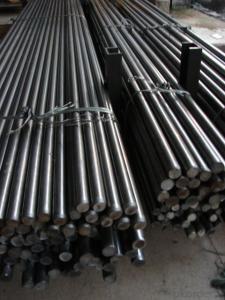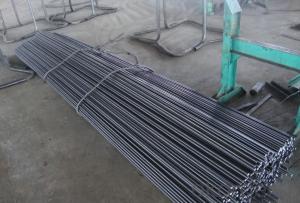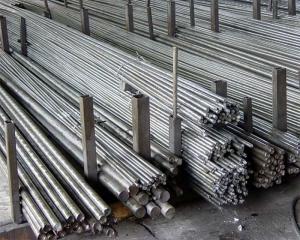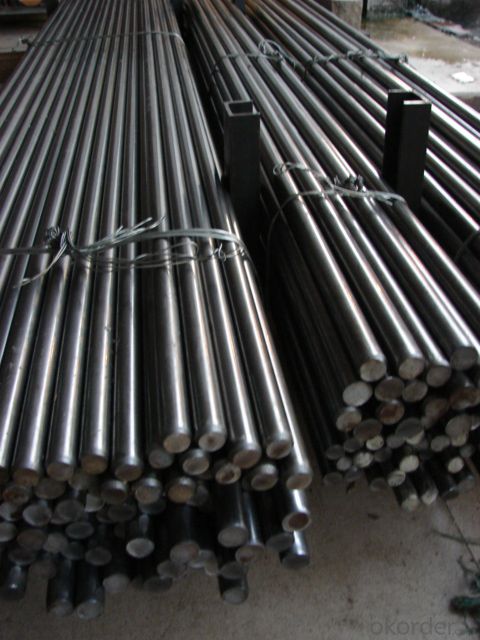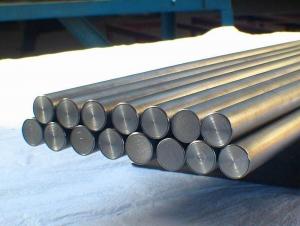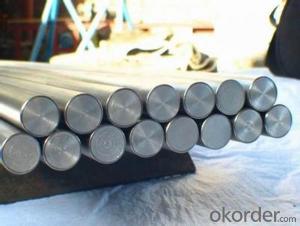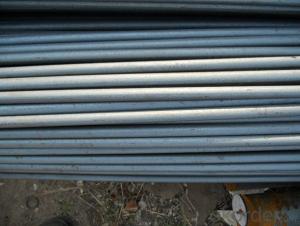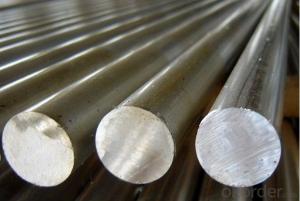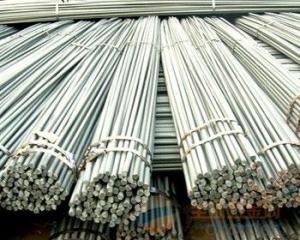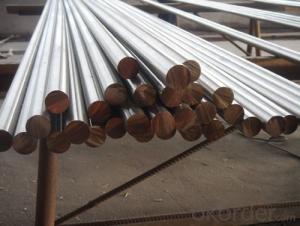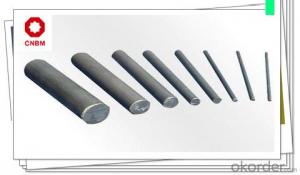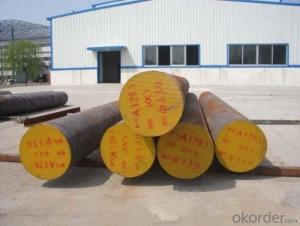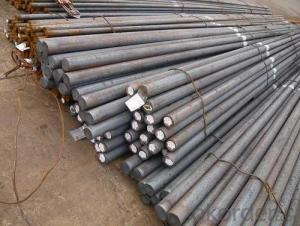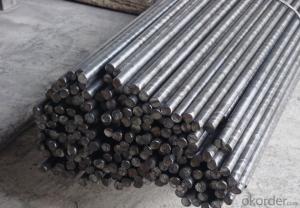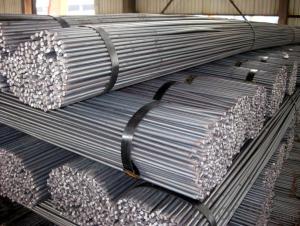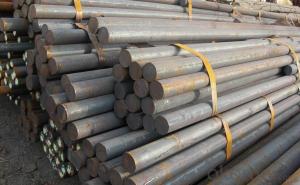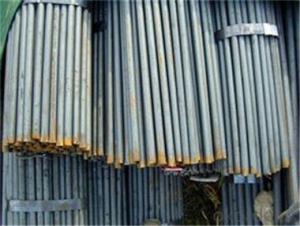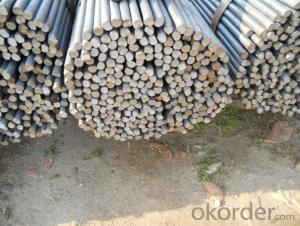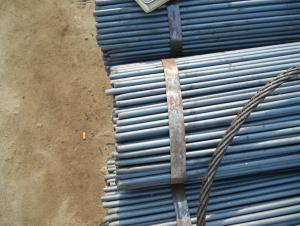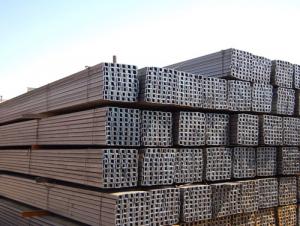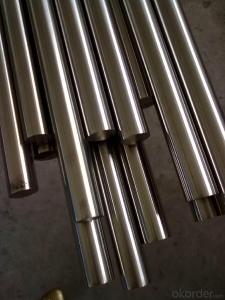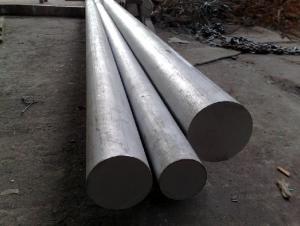GB 45#/SAE 1045 Steel Round Bar 32mm/35mm
- Loading Port:
- China main port
- Payment Terms:
- TT or LC
- Min Order Qty:
- 50 m.t
- Supply Capability:
- 10000 m.t/month
OKorder Service Pledge
OKorder Financial Service
You Might Also Like
GB 45#/SAE 1045 Steel Round Bar 32mm/35mm
Description:
-Specification: 32mm/35mm
-Length: 6m/12m
-Standard: GB/SAE/Japanese Standard
-Material: GB 45#/SAE1045/S45C
Chemical Composition of GB 45#/SAE 1045 Steel Round Bar 32mm/35mm:
| C | Si | Mn | P | S | Ni | Cr | Cu |
| 0.42-0.50 | 0.17-0.37 | 0.50-0.80 | ≤0.035 | ≤0.035 | ≤0.30 | ≤0.25 | ≤0.25 |
Packaging & Delivery of GB 45#/SAE 1045 Steel Round Bar 32mm/35mm:
Packaging Detail: All goods are packed in bundle with steel strips and shipped by break bulk vessel or container (depend on target market and different ports)
Delivery Detail: 45 days
MOQ: 50 tons per specification; we can negotiate the quantity if the specification is normal or we have stock of one specification.
Weight: The price invoicing on theoretical weight basis or actual weight basis depends on customer’s request.
Shipment: The shipment of bulk break or container is depends on customer’s request and the situation of the port of destination.
Documents given: Full set of original clean on board bill of lading; Original signed commercial invoice; Original packing list; Policy of insurance; Certificate of origin and what the target market needs.
Payment:
-Invoicing on theoretical weight or actual weight a s customer’s request.
-FOB, CFR or CIF.
-Regular terms of payment:
1, 30% payment in advance, the remaining balance (70% payment) against the copy of B/L.
2, 30% payment in advance, the remaining balance (70% L/C) against the copy of B/L.
3, Negotiable.
Images of GB 45#/SAE 1045 Steel Round Bar 32mm/35mm:
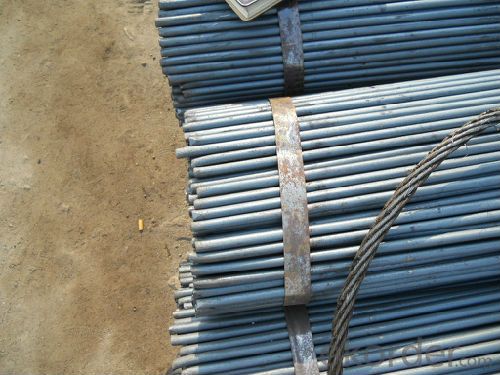
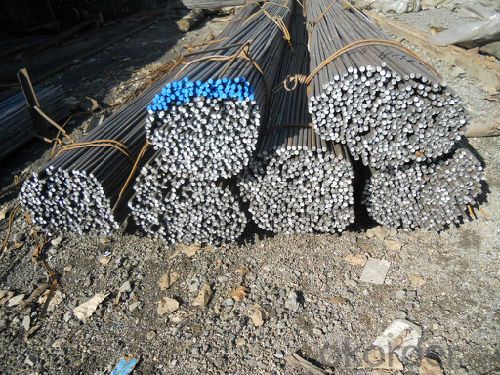
*If you would like to get our price, please inform us the size, standard/material and quantity. Thank you very much for your attention.
- Q: What is the difference between hot rolled and cold drawn steel round bars?
- Hot rolled steel round bars undergo the process of heating a steel billet or ingot at a high temperature and subsequently rolling it into the desired shape. This process yields a rougher surface finish and a greater diameter tolerance in comparison to cold drawn steel round bars. The usage of hot rolled bars is frequently found in areas where strength and durability hold significance, such as in construction and manufacturing. On the contrary, cold drawn steel round bars are created by pulling a hot rolled bar through a die at room temperature, leading to a smoother surface finish and tighter diameter tolerances. This procedure also enhances the mechanical properties of the steel, including its strength and hardness. Cold drawn bars are often employed in scenarios where precision and a high-quality surface finish are prerequisites, like in the production of shafts, bolts, and precision components. To summarize, the principal disparities between hot rolled and cold drawn steel round bars encompass the surface finish, diameter tolerance, and mechanical properties. Hot rolled bars bear a rougher surface finish, larger diameter tolerances, and are typically utilized in contexts where strength and durability are paramount. Cold drawn bars possess a smoother surface finish, tighter diameter tolerances, and are commonly employed in situations necessitating precision and a high-quality surface finish.
- Q: What is the difference between a bright and a rough turned steel round bar?
- A bright turned steel round bar refers to a steel bar that has undergone a finishing process, resulting in a smooth and polished surface. On the other hand, a rough turned steel round bar has a more textured surface due to minimal finishing, giving it a rougher appearance.
- Q: What are the different types of connections used with steel round bars?
- There are several types of connections commonly used with steel round bars, including threaded connections, welded connections, and mechanical connections such as couplers or splice sleeves. These connections are used to join steel round bars together in various applications, providing strength and stability to the overall structure.
- Q: Can steel round bars be coated with protective finishes?
- Steel round bars can indeed have protective finishes applied to them. Applying protective finishes to steel round bars is a widespread practice aimed at improving their durability and resistance to corrosion. There are several options available for protective finishes, such as galvanizing, powder coating, and epoxy coating, among others. These finishes effectively safeguard the steel bars against rust and deterioration, thus prolonging their lifespan and enabling them to perform well in different environments. The selection of a protective finish depends on various factors, including the intended use of the steel round bars, the extent of exposure to moisture or corrosive substances, and the desired aesthetic appeal.
- Q: Difference between round bar and other steel bars
- It is divided into three kinds: hot rolling, forging and cold drawing. Round steel (grade 1 steel) belongs to ordinary low carbon steel, and most other steel bars are alloy steel. Round steel is of low strength and high strength of other steel.
- Q: Are steel round bars suitable for welding applications?
- Steel round bars are a great choice for welding. They are commonly used in welding applications because they are strong and durable. You can easily weld them to other steel components or structures using different welding processes like arc welding, MIG welding, or TIG welding. Steel round bars also have good mechanical properties, including excellent tensile strength. This makes them suitable for welding applications where strength and load-bearing capacity are important. They come in various sizes and grades, so you can use them for different welding projects. However, it's important to choose the right type of steel round bar for your specific welding application and desired final product properties.
- Q: Can steel round bars be machined or forged?
- Yes, steel round bars can be machined or forged. Machining involves using cutting tools to remove material from the round bar to achieve the desired shape or dimension. It can be done through various methods such as turning, milling, drilling, or grinding. Machining is commonly used to create precise components or parts. On the other hand, forging is a process where the steel round bar is heated and shaped by applying compressive forces. This is typically done using a hammer or a press to deform the material and create the desired shape. Forging helps enhance the mechanical properties of the steel, such as strength and toughness, by aligning the grain structure and removing any internal defects. Both machining and forging methods can be used to shape and manipulate steel round bars to meet specific requirements for various applications in industries such as automotive, construction, energy, and manufacturing. The choice between machining or forging depends on factors like the complexity of the part, required tolerances, material properties, and the desired final product.
- Q: What are the factors to consider when selecting a steel round bar?
- When selecting a steel round bar, there are several factors that should be taken into consideration. Firstly, it is important to consider the grade of steel. Different grades of steel have varying properties and strengths, so the specific application and requirements should be evaluated. For example, if high corrosion resistance is needed, stainless steel grades like 304 or 316 may be suitable, whereas for structural applications, carbon steel grades like A36 or 1018 may be more appropriate. Secondly, the dimensions and size of the round bar should be considered. This includes the diameter, length, and tolerance requirements. The size should be chosen based on the specific application, load-bearing capacity, and the available space for installation. Thirdly, the surface finish and condition of the round bar should be assessed. This includes factors such as surface roughness, straightness, and any surface defects. The surface finish should be selected based on the desired aesthetics, functional requirements, and the manufacturing process. Another important factor is the availability and cost of the steel round bar. It is crucial to consider the availability of the desired grade and size from suppliers, as well as the associated cost. It is advisable to compare prices from different suppliers to ensure the best value for money. Furthermore, the required mechanical properties of the steel round bar should be evaluated. This includes factors such as tensile strength, yield strength, hardness, and ductility. The mechanical properties should align with the intended application and load-bearing requirements. Lastly, it is essential to consider any additional requirements or certifications that may be needed. This could include compliance with specific industry standards (e.g., ASTM, ISO), certifications (e.g., RoHS, REACH), or specific testing requirements (e.g., ultrasonic testing, impact testing). In conclusion, when selecting a steel round bar, it is important to consider the grade, dimensions, surface finish, availability, cost, mechanical properties, and any additional requirements. Taking into account these factors will help ensure that the steel round bar chosen is suitable for the intended application and meets all necessary specifications.
- Q: What are the applications of steel round bars in the aerospace industry?
- Steel round bars are widely used in the aerospace industry due to their exceptional strength, durability, and versatility. These bars are utilized in various applications, including: 1. Structural Components: Steel round bars are commonly used in the production of structural components in the aerospace industry. They are used for manufacturing aircraft frames, landing gear, wing spars, and other critical structural elements. The high tensile strength of steel ensures the structural integrity and safety of the aircraft. 2. Fasteners: Steel round bars are also used to produce fasteners such as bolts, screws, and pins. These fasteners play a crucial role in holding different parts of the aircraft together. Steel's strength and resistance to fatigue make it an ideal material for these critical connections. 3. Engine Components: Steel round bars find application in the production of various engine components. They are used to manufacture shafts, crankshafts, connecting rods, and turbine blades. These components need to withstand high temperatures, pressure, and mechanical stress, and steel's heat resistance and strength make it suitable for these demanding conditions. 4. Landing Gear: The landing gear of an aircraft is subjected to immense stress during takeoff, landing, and taxiing. Steel round bars are used in the construction of landing gear components such as axles and struts. The high strength and toughness of steel ensure the landing gear's ability to withstand the forces encountered during landing operations. 5. Tooling and Fixtures: Steel round bars are used to manufacture tooling and fixtures necessary for the production and maintenance of aircraft. These tools and fixtures are employed in various processes, including machining, assembly, and inspection. Steel's hardness and machinability make it an ideal material for these applications. In summary, steel round bars have numerous applications in the aerospace industry, ranging from structural components to fasteners, engine parts, landing gear, and tooling. The unique combination of strength, durability, and versatility offered by steel makes it an essential material in ensuring the performance, safety, and reliability of aerospace systems.
- Q: How can steel round bars be protected against rust?
- Steel round bars can be protected against rust through various methods. One common way is by applying a protective coating, such as paint or a rust-resistant primer. This coating acts as a barrier between the steel and the surrounding environment, preventing moisture and oxygen from coming into contact with the metal surface. Another effective method is to galvanize the steel round bars. Galvanization involves immersing the steel in a bath of molten zinc, which forms a protective layer on the surface. This zinc coating acts as a sacrificial barrier, meaning that even if it gets scratched or damaged, it will still protect the underlying steel. Regular maintenance is crucial in preventing rust on steel round bars. This includes keeping the bars clean and dry, as moisture is a major catalyst for rust formation. Regularly inspecting the bars for any signs of rust or damage and promptly addressing them is also important in preventing further corrosion. Furthermore, storing the steel round bars in a dry and well-ventilated area can help reduce the chances of rusting. If possible, keeping the bars elevated off the ground or using a moisture-absorbing material, such as silica gel packets, can further protect against moisture buildup. Lastly, utilizing corrosion inhibitors or rust-preventative oils can provide an additional layer of protection for steel round bars. These substances create a thin film on the surface that inhibits the formation of rust. By employing these methods, steel round bars can be effectively protected against rust, ensuring their longevity and maintaining their structural integrity.
Send your message to us
GB 45#/SAE 1045 Steel Round Bar 32mm/35mm
- Loading Port:
- China main port
- Payment Terms:
- TT or LC
- Min Order Qty:
- 50 m.t
- Supply Capability:
- 10000 m.t/month
OKorder Service Pledge
OKorder Financial Service
Similar products
Hot products
Hot Searches
Related keywords
